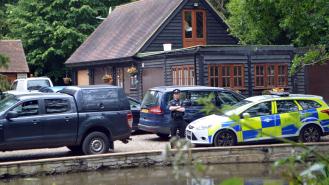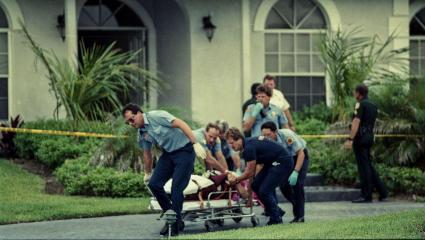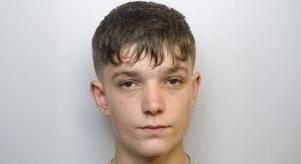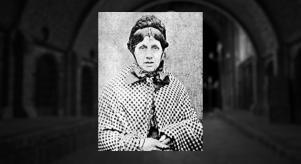
Edinburgh Gangs: Violence, drugs and the hidden capital crimewave
When it comes to organised crime in Scotland, Glasgow has historically tended to steal the limelight. From the razor gangs of the 1930s to the 'ice cream wars' of the 1980s, the west coast has typically been the media focus when it comes to illegal activity north of the border.
However, such a perception ignores the dark and troubling underbelly that has troubled Edinburgh for centuries. There is a tendency to view the capital’s crime scene as confined to the past; the 18th century exploits of Deacon Brodie, for example, or the 19th century phenomenon of selling bodies to medical science made most infamous by Burke and Hare.
Yet Edinburgh gangs have developed and prospered in tandem with their west coast counterparts in the 20th and 21st centuries, too. Join us at Crime+Investigation as we explore that evolution in more detail.
Early beginnings of Edinburgh gang life
At the outset, affiliation with a gang in Edinburgh (as in Glasgow and elsewhere) was less about illegal activity geared towards generating profit and more about proving masculinity among peers. Highly localised gangs sprang up across the capital through the 1920s and 1930s, with sectarianism often playing a prominent role.
Violence between rival factions was common. In order to swell their numbers and have more manpower (and thus a greater chance of victory) in turf battles, gangs soon began cultivating junior outfits. These were often comprised of adolescents who were less bothered about religious tensions and more about aspiring to full gang membership.
Thus were born the Young Team factions of the 1960s and 1970s, which operated territorially all across the capital. From Clermiston to Niddrie and Leith to Oxgangs, hordes of young men would engage in violent acts and pitched battles with one another for no other reason than to display their masculinity, gain bragging rights and defend their patch.
At the same time, however, several Organised Crime Groups (OCGs) also began to spring up around the city. These differed quite significantly from the Young Teams in that they placed a pointed focus on making money. This could take many forms, from selling stolen goods and protection racketeering to money laundering and fraud.
The drug boom
Of course, the lines between Young Teams and OCGs became ever more blurred as the former became more entrepreneurial and the latter more involved in intimidation and violence. Before too long, it became clear that the younger elements were in essence being trained up to take their place in their more profit-oriented counterparts.
Meanwhile, an influx of drugs into Scotland in the 1970s saw the organised crime world explode. Heroin, in particular, became an extremely lucrative commodity for OCGs and added an extra string to their economic bow. Before long, trafficking of these hard drugs was the biggest avenue to financial gain available.
Although this period did not feature an out-and-out kingpin throughout the city, each neighbourhood had its own hardmen who ruled their particular roost. In Tollcross, for example, the Lynch brothers reigned supreme; Ronnie Turnbull and John Gray were the big dogs in Broughton, while Bob Carse was numero uno in Granton.
When rivalries broke out between these syndicates, all hell could break loose. For example, an ongoing feud between Billy Lynch of Tollcross and John Gray of Broughton resulted in death threats, firebombing of houses and the eventual arrest of Gray, who was charged with five counts of rape and 12 of assault and sentenced to 12 years in prison.
This time also saw an influx of new faces and nationalities into the Edinburgh crime scene. Mob bosses from Glasgow, London and Ireland, as well as from China and the Soviet Union, began to command a share of the illicit pie. Human trafficking also became increasingly common as outfits turned more professional and more morally bankrupt in their operations.
Modern-day turf warfare
Out of this maelstrom of crime and chaos grew the current status quo, which was largely headed by one man for many years. Mark Richardson rose to prominence in the late 1990s and early 2000s, going on to monopolise the gang scene in Edinburgh throughout this time. However, incarcerations in 2010 and again in 2018 (the latter of which he is still serving now) created an opportunity for his enemies to steal ground.
Chief among these are the Kinahan cartel, who are regarded as among the most powerful crime gangs operating in Britain and had a $5 million bounty placed on several of their members by the US government in 2022. Hailing from Dublin but now residing in Dubai, the Kinahans have teamed up with other individuals disgruntled by Richardson’s monopoly to topple it once and for all.
These are thought to include the Lyons family, who are the main rivals of the Daniels crew, Richardson’s ally in Glasgow, as well as Stevie 'Jimmy' Jamieson. Jamieson is also based in the UAE and is therefore able to coordinate more easily with the Kinahans, orchestrating attacks against Richardson’s outfit from afar.
With Richardson recently moved to solitary confinement for his own safety, his organisation appears to be weaker than ever and events may well be coming to a head. March 2025 saw a spate of attacks on businesses and homes linked to the crimelord, with journalists and commentators speculating his time at the top could be coming to an end. No doubt, more developments will unfold as the year progresses.
Want to stay up to date with all things true crime? Then be sure to subscribe to the Crime+Investigation newsletter. By doing so, you’ll get exclusive access to our latest content completely for free.










